Are you tired of spending endless hours scrubbing away at stubborn stains on your ceramic pans? Well, prepare to bid farewell to your cleaning woes and say hello to sparkling cookware with our ultimate guide on how to clean ceramic pans like a pro!
Whether you’re a culinary connoisseur or a novice in the kitchen, maintaining the pristine condition of your ceramic pans is essential for both the longevity of your cookware and the quality of your meals.
So, buckle up as we unveil the secrets to effortlessly restoring your ceramic pans to their former glory, leaving them gleaming and ready to tackle your next culinary masterpiece!
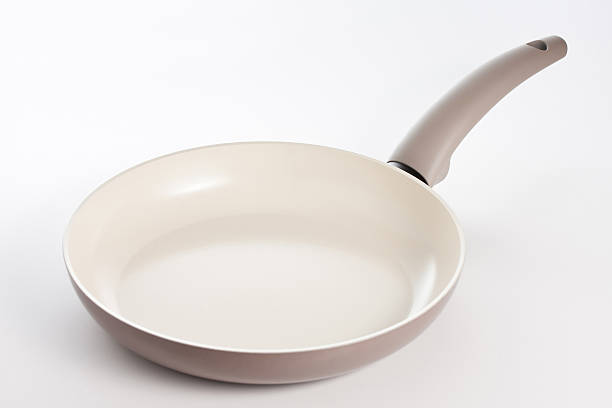
How To Clean Ceramic Pan
Cleaning ceramic pans properly is essential for maintaining their non-stick properties and prolonging their lifespan. Here are nine effective ways to clean ceramic pans:
1. Cool Down Before Cleaning
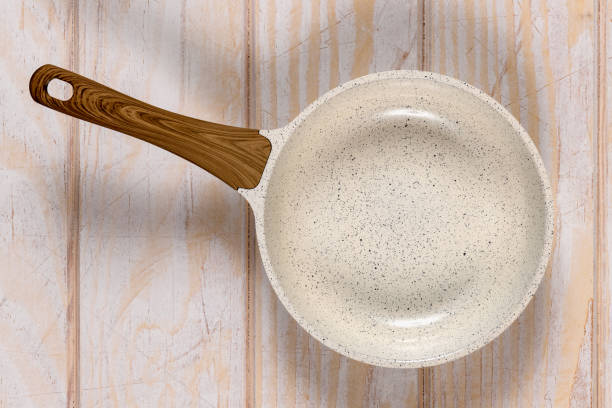
Allowing your ceramic pan to cool down before cleaning is a crucial step in preserving its longevity and preventing damage.
Rapid changes in temperature, such as immersing a hot pan in cold water, can lead to thermal shock, which may cause the ceramic coating to crack or warp.
By allowing the pan to cool naturally, you minimize the risk of thermal shock and ensure that the non-stick surface remains intact. Moreover, cooling down the pan makes it safer to handle and reduces the likelihood of burns or accidents during cleaning.
This simple practice sets the foundation for effective cleaning and helps maintain the quality of your ceramic cookware for years to come.
2. Hot Water
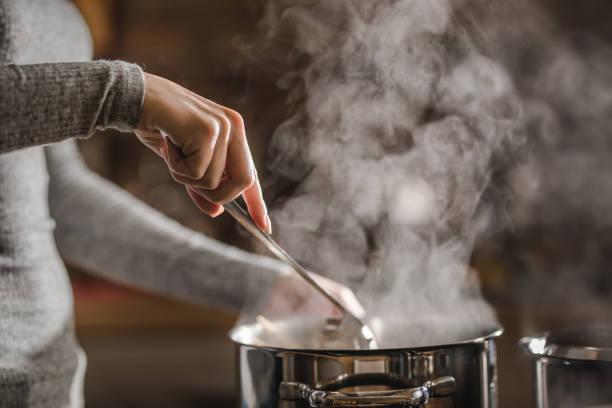
Using hot water is an effective method for cleaning ceramic pans, as it helps to loosen food residues and grease without the need for harsh chemicals. The heat from the water helps to break down stubborn stains, making them easier to remove during washing.
When hand washing ceramic pans, fill the sink or basin with hot water and add a mild dishwashing detergent. Allow the pan to soak in the hot, soapy water for a few minutes to further loosen any stuck-on debris.
This simple yet powerful technique not only simplifies the cleaning process but also helps to maintain the non-stick properties of the ceramic coating, ensuring that your pans remain in top condition for long-lasting use.
3. Soap And Warm Water
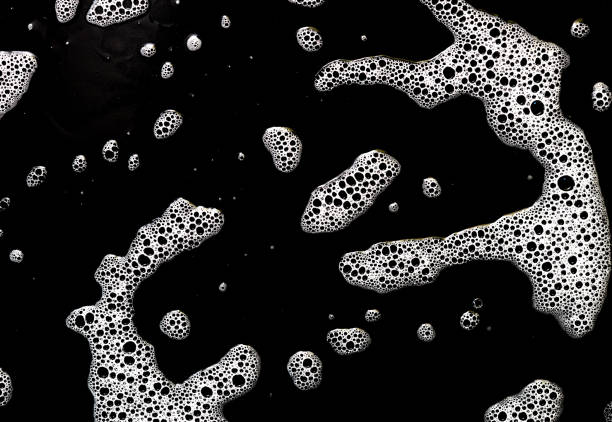
Cleaning ceramic pans with soap and warm water is a gentle yet effective method to remove food residues and maintain their non-stick properties. Start by filling the sink or a basin with warm water and adding a small amount of mild dish soap.
Submerge the ceramic pan in the soapy water and use a soft sponge or cloth to gently scrub away any debris. The combination of warm water and soap helps to dissolve grease and lift stains without damaging the ceramic coating.
Rinse the pan thoroughly with clean water to remove any soap residue, and then dry it with a soft towel or let it air dry. This straightforward cleaning method is suitable for regular maintenance and ensures that your ceramic pans remain clean and ready for your next cooking adventure.
4. Salt
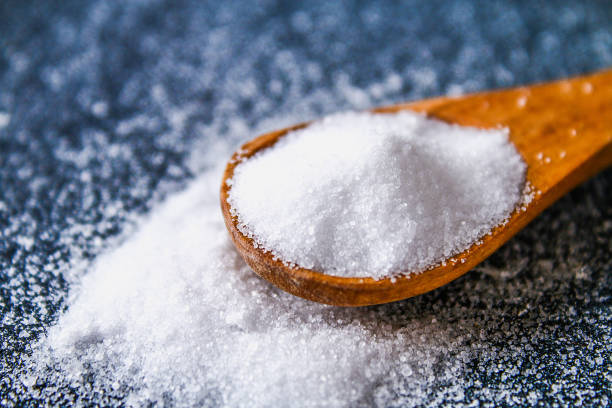
Salt can be an excellent natural cleaner for ceramic pans, especially for stubborn stains or burnt-on residue. To clean your ceramic pan with salt, start by sprinkling a generous amount of table salt onto the affected areas.
Then, dampen a sponge or cloth with warm water and use it to scrub the salt into the stains. The abrasiveness of the salt helps to loosen the debris without scratching the ceramic surface.
For tougher stains, you can create a paste by mixing salt with a small amount of water and applying it directly to the affected areas. Let the salt sit on the stains for a few minutes to allow it to work its magic.
After scrubbing, rinse the pan thoroughly with warm water to remove any remaining salt residue. This simple yet effective method can help restore the shine to your ceramic pans and keep them looking like new.
5. Hydrogen Peroxide
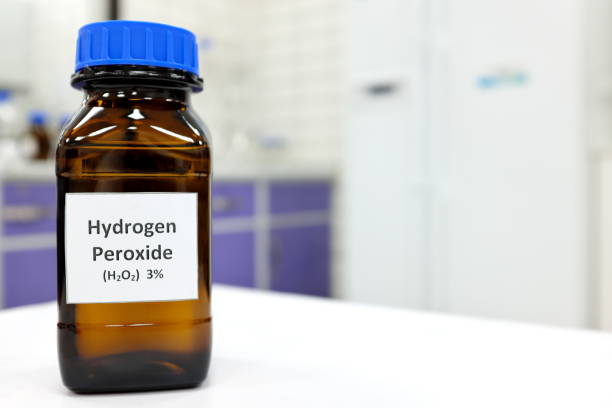
Hydrogen peroxide can be an effective cleaner for ceramic pans, particularly when dealing with tough stains or discoloration. To use hydrogen peroxide for cleaning, start by mixing equal parts of hydrogen peroxide and water in a spray bottle or bowl.
Spray or apply the solution onto the stained areas of the ceramic pan and let it sit for a few minutes to penetrate the residue. The hydrogen peroxide works as a mild bleaching agent, breaking down stains and helping to lift them from the surface of the pan.
After allowing the solution to work its magic, use a sponge or soft brush to gently scrub the stained areas. Rinse the pan thoroughly with warm water to remove any remaining hydrogen peroxide residue.
This method can be particularly effective for removing stubborn stains, leaving your ceramic pans looking clean and refreshed. However, it’s essential to test a small, inconspicuous area of the pan first to ensure that the hydrogen peroxide doesn’t cause any damage or discoloration.
6. Baking Soda
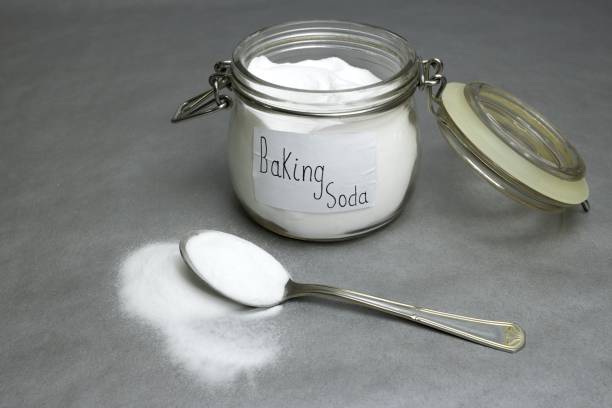
Baking soda is a versatile and effective cleaner for ceramic pans, capable of tackling tough stains and grease without damaging the non-stick surface.
To clean your ceramic pan with baking soda, start by sprinkling a generous amount of baking soda over the stained or greasy areas. Then, dampen a sponge or cloth with warm water and use it to gently scrub the baking soda into the stains.
The mild abrasive nature of baking soda helps to lift away residues and stains without scratching the ceramic coating. For tougher stains, you can create a paste by mixing baking soda with a small amount of water and applying it directly to the affected areas.
Allow the baking soda paste to sit on the stains for a few minutes to penetrate and loosen the debris. After scrubbing, rinse the pan thoroughly with warm water to remove any remaining baking soda residue.
This simple yet powerful cleaning method can help restore the shine to your ceramic pans, leaving them looking clean and refreshed.
7. White Vinegar

White vinegar is an excellent natural cleaner for ceramic pans, renowned for its ability to cut through grease and dissolve stubborn stains. To clean your ceramic pan with white vinegar, start by diluting it with an equal amount of water in a spray bottle or bowl.
Spray or pour the vinegar solution onto the stained areas of the pan and allow it to sit for a few minutes to penetrate the residues. The acidic nature of white vinegar helps to break down grease and lift stains from the surface of the pan.
After letting the solution work its magic, use a sponge or soft brush to gently scrub the stained areas. Rinse the pan thoroughly with warm water to remove any remaining vinegar residue.
This method is particularly effective for removing burnt-on residues and stubborn stains, leaving your ceramic pans clean and refreshed. Plus, white vinegar is non-toxic and environmentally friendly, making it a safe choice for cleaning your cookware.
8. Distilled Vinegar And Baking Soda
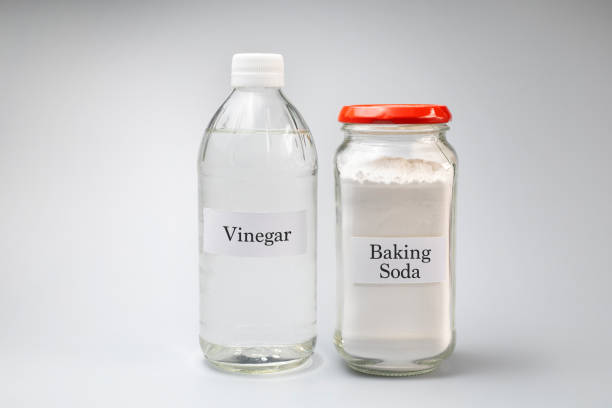
Combining distilled vinegar with baking soda creates a powerful and natural cleaning solution that can effectively tackle tough stains and grease on ceramic pans. To use this method, start by sprinkling baking soda generously over the stained areas of the ceramic pan.
Then, pour distilled vinegar over the baking soda, causing a foaming reaction that helps to lift stubborn residues. Allow the mixture to fizz and bubble for a few minutes, allowing it to penetrate the stains.
The combination of baking soda and vinegar creates a mild abrasive action that helps to loosen debris without scratching the ceramic coating. After the fizzing subsides, use a sponge or soft brush to gently scrub the stained areas.
Rinse the pan thoroughly with warm water to remove any remaining residue. This natural cleaning method is highly effective and safe for ceramic pans, leaving them looking clean and refreshed without the need for harsh chemicals.
9. Enzymes And Acidic Solutions
Enzymes and acidic solutions can be effective for cleaning ceramic pans, especially when dealing with stubborn residues and grease.
Enzymatic cleaners contain enzymes that break down organic matter, while acidic solutions help to dissolve mineral deposits and tough stains. To clean your ceramic pan using this method, start by applying an enzymatic cleaner directly to the stained areas.
Allow the cleaner to sit for a few minutes to activate the enzymes and break down the residues. Next, rinse the pan with warm water to remove the enzymatic cleaner. Then, apply an acidic solution such as lemon juice or white vinegar to the stained areas.
The acidity of these solutions helps to further dissolve stains and grease. Allow the acidic solution to sit for a few minutes before rinsing the pan thoroughly with warm water.
This combination of enzymatic cleaners and acidic solutions can effectively remove tough residues from ceramic pans, leaving them clean and ready for use. However, it’s essential to rinse the pan thoroughly after cleaning to remove any traces of the cleaner or acidic solution.
10. Dryer Sheets
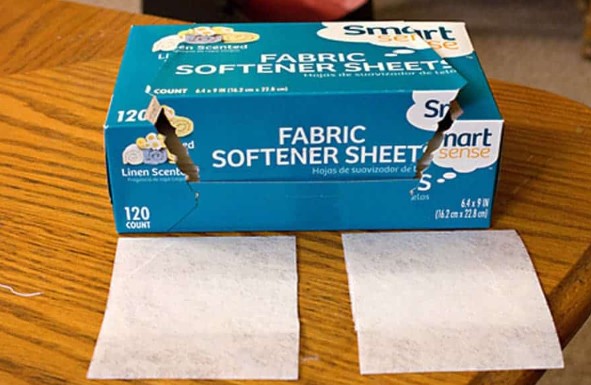
Using dryer sheets to clean ceramic pans is not recommended. Dryer sheets are designed for use in laundry to reduce static and add fragrance to clothes during drying. They contain chemicals and substances that are not suitable for cleaning cookware, especially those that come into contact with food.
Using dryer sheets on ceramic pans can leave behind residues that may be difficult to remove and could potentially transfer to food during cooking, posing health risks. Additionally, dryer sheets are not effective for removing tough stains or grease from ceramic pans.
Instead of using dryer sheets, it’s best to stick to safe and effective cleaning methods specifically designed for cookware, such as using mild dish soap, baking soda, vinegar, or other non-toxic cleaners. These methods are safer and more suitable for maintaining the quality and safety of your ceramic pans.
Seasoning Ceramic Pan
Seasoning a ceramic pan is a process that involves applying a thin layer of oil to the surface of the pan to create a protective coating that enhances its non-stick properties and prevents food from sticking during cooking.
To season a ceramic pan, start by washing it with warm, soapy water and drying it thoroughly with a clean towel. Once the pan is completely dry, apply a small amount of oil to the surface, such as vegetable oil or coconut oil.
Use a paper towel to spread the oil evenly across the entire surface of the pan, including the sides and handle. Make sure to apply only a thin layer of oil, as too much can lead to a sticky residue.
Next, place the pan in a preheated oven set to a low temperature, typically around 300°F (150°C), and let it bake for about 20-30 minutes. This process allows the oil to penetrate the ceramic coating, creating a smooth and durable non-stick surface.
After baking, remove the pan from the oven and let it cool completely before wiping off any excess oil with a paper towel. Your ceramic pan is now seasoned and ready to use.
It’s essential to re-season the pan periodically, especially after washing it with soap, to maintain its non-stick properties and prolong its lifespan. With proper seasoning and care, your ceramic pan will provide you with excellent cooking results for years to come.
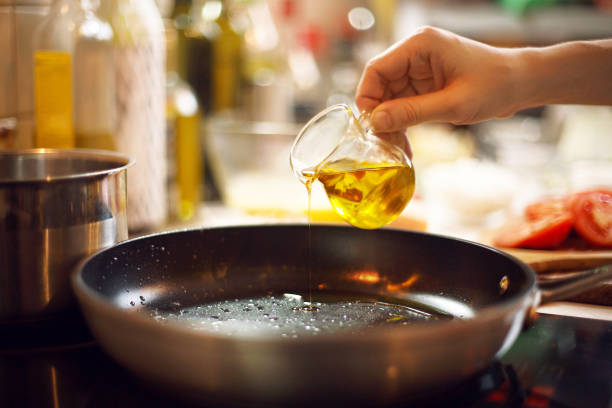
Frequently Asked Questions (FAQs) – How To Clean Ceramic Pan
Why is cleaning my ceramic pan a breeze compared to other cookware materials?
Ceramic pans are naturally non-stick, making cleanup effortless with minimal scrubbing required. Say goodbye to stubborn food residues!
How does cleaning my ceramic pan contribute to healthier cooking habits?
By easily removing leftover food particles, cleaning your ceramic pan ensures a fresh cooking surface every time, promoting healthier and more hygienic cooking practices.
Will cleaning my ceramic pan prolong its lifespan?
Absolutely! Regular cleaning helps maintain the integrity of the ceramic coating, ensuring your pan lasts longer and remains a reliable kitchen companion for years to come.
What eco-friendly cleaning methods can I use for my ceramic pan?
Lemon juice, baking soda, or vinegar are fantastic eco-friendly options for cleaning ceramic pans. Not only are they effective at cutting through grease, but they’re also safe for the environment.
How can I make cleaning my ceramic pan a relaxing part of my cooking routine?
Turn cleaning into a zen moment by using it as a time to reflect on the delicious meals you’ve prepared. With ceramic pans, the cleaning process is so quick and easy that it can become a peaceful ritual in your culinary journey.
Will cleaning my ceramic pan with gentle methods affect its performance?
Not at all! Gentle cleaning methods like using mild dish soap and a soft sponge preserve the non-stick properties of your ceramic pan, ensuring it continues to perform impeccably with each use.
What’s the secret to keeping my ceramic pan looking brand new?
Regular cleaning with gentle methods and avoiding harsh abrasives or metal utensils will keep your ceramic pan looking as good as the day you bought it, adding a touch of sparkle to your kitchen arsenal.
Can I clean my ceramic pan in the dishwasher for ultimate convenience?
While handwashing is recommended to prolong its lifespan, many ceramic pans are dishwasher-safe, offering you the convenience of effortless cleanup without compromising on quality or performance.
How can I involve my family in the joy of caring for our ceramic pan?
Turn cleaning into a fun family activity by assigning different roles to each member during cleanup. With ceramic pans, it’s so easy and enjoyable that even the little ones can get involved!
What’s the best part about cleaning my ceramic pan?
The satisfaction of seeing it gleam like new after just a few moments of cleaning! With ceramic pans, maintaining kitchen cleanliness has never been more rewarding or hassle-free.
Conclusion
In conclusion, mastering the art of cleaning ceramic pans is essential for both maintaining their longevity and ensuring the quality of your cooking.
By adhering to the proper techniques outlined in this guide, including gentle scrubbing with non-abrasive materials, avoiding harsh chemicals, and employing periodic seasoning, you can effectively preserve the non-stick properties and integrity of your ceramic cookware.
Remember, a well-maintained ceramic pan not only enhances your culinary experience but also contributes to a healthier and more enjoyable cooking environment. With diligence and care, you can continue to enjoy the benefits of your ceramic pan for countless meals to come.
Other Articles You May Also Like: